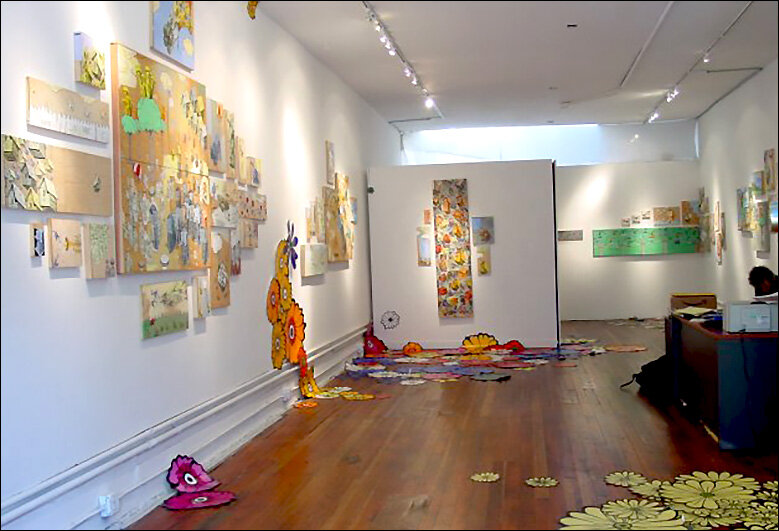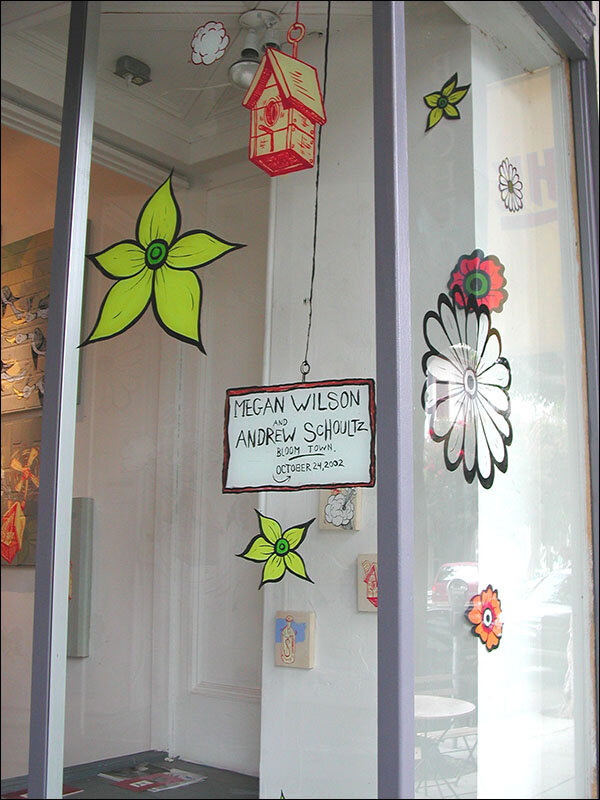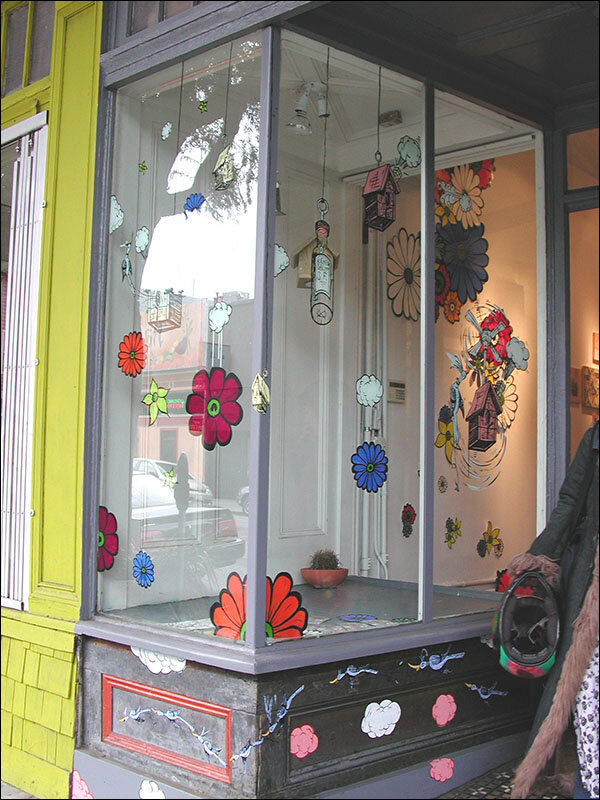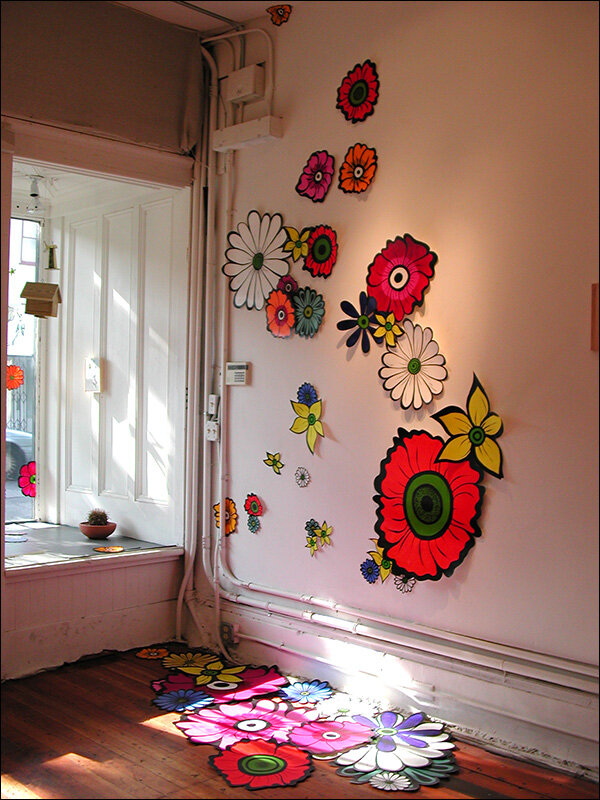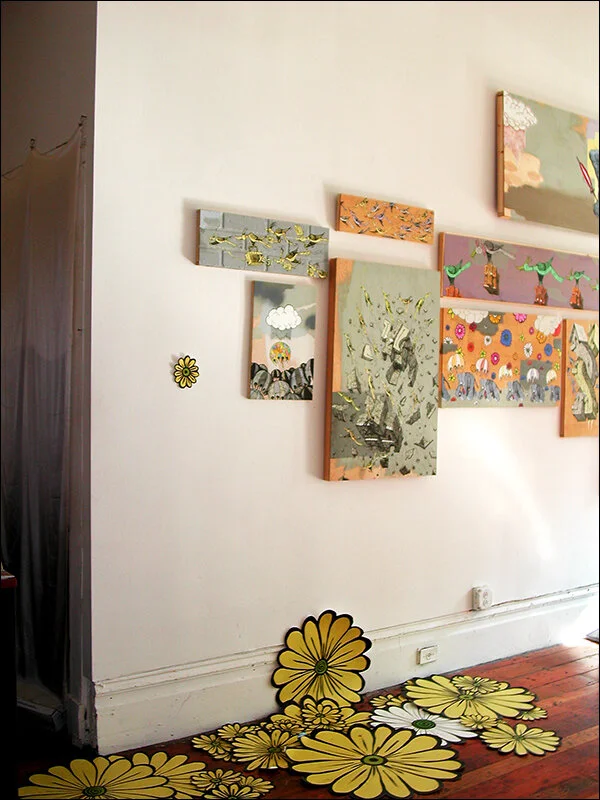Thoughts December 2002 #2
Megan Wilson and Andrew Schoultz, Bloomtown, Bucheon Gallery, 2002
The second entry from one of two documents I found a couple of weeks ago while looking for a file on my computer - one titled “Thoughts December 2002” that’s 10-pages long; the other titled “Thoughts January 2003”, 18-pages long. Both are reflections on my work divided into titled sections that indicate I was spending time writing almost daily for several weeks. I have no idea what inspired the entries. However, it was interesting to read these reflections almost twenty years later.
The theme that runs through these entries is working independently, outside of the gallery / institutional setting, which I was struggling with at the time - the benefits and the challenges - which was also happening simultaneously with my recent choice at the time to work for myself doing non-profit development and grantwriting for several nonprofit organizations. Ultimately, with my art career, I continued to do both - work with galleries and institutions, as well as self-directed, independent projects; however, it was never a clear and easy choice to do either. And here it is many moons later and I’ve had successes and failures doing both, and I’ve deeply appreciated the opportunities that have come through each. Ultimately, what I’ve learned is to trust my intuition and not to second guess myself or give too much weight to how other people perceive the choices I do make; which is not to say I don’t listen to others and learn from their perspectives - I definitely have, but it’s that delicate balance of really listening to external and internal sources and knowing when someone else has my best interests in mind, and when I need to follow my own path - and trust my inner voice. In both cases, I’ve been very blessed to have the opportunity to work with many amazing people.
Working Independently 12-24-02:
When I was working on the Home project, one of the first things that I would be asked when I talked about the project was “who are you working with?” or “who is this through?” – which meant “who is sponsoring you?” – either financially or in the form of association. There needed to be a branding – or that was expected. The project both lost credibility/importance and gained it by the nature of it being independently produced. I too had the same mixed feelings about the project’s validity based on its lack of an “institution” associated with it. Although, in the end, I did have financial support for the project through the Gunk Foundation – although this came after the project was almost finished and really had no bearing on whether the project would happen or not. But I greatly appreciated the support in the form of financial resources, as well as the Gunk putting their name behind what I was doing. I did try getting an alternative gallery to work with me on the project – to provide a gallery component, but they weren’t interested – or they never responded to my proposal – I just didn’t hear from them again after I presented the idea to them. In the end, I think this was a good thing and it gave me more fuel to move ahead independently, and I think the work itself was stronger without the gallery component. Though the signs did end up being displayed at ATA, however this was not something that I pursued – I was asked to put them up before I gave them out. It was nice too for me to see them all displayed together in one space – but I didn’t feel it added anything to the project, and in fact it felt like nothing more than an attractive display – which only confirmed how I came to see the positive outcome of being rejected by the gallery.
It’s an interesting phenomenon that independent productions have become synonymous with “hip,” “cool,” and more legitimate in terms of their cultural weight. Yet often it seems that their ultimate goal is to be recognized by a larger institution and to be discovered by that institution and then represented by it or associated with it. Everyone loves the underdog – but one only wants to be recognized as such after the fact. And to some degree I think it’s true that work that is initially executed with the intent to be independent – that is done as an assertion of independence from dominant culture or forces – loses some of its power when it’s represented and showcased within the context of the institution. It can become contrived – it becomes a project of the institution – and while the artist can justify the merger to him or herself as collaboration or as an opportunity to reach a greater audience, it still doesn’t change the experience of the work within this new context and outside of its initial vision.
Flower Interruption, Tokyo, Japan, 2002
When I installed the flowers at the Bucheon Gallery – immediately I had a very strong, repulsive reaction to them there – they became something entirely different from what I had conceived of them as. Initially, the work had been conceptualized to be installed within the urban environment – appearing spontaneously – and on the ground so that people would have no choice but to interact with them. I saw the contrast of these brightly colored, playful works against the ground and in the path of those with their “nose to the ground,” as an interruption to the monotony of the daily grind and to the idea of breaking with what is expected, business as usual. So, by working independently the format in itself – the delivery – is a reflection of the intent of the work as well. Within the gallery context, the flowers lost their strength – they became pretty decorations with no criticality – this also became enhanced by the constant badgering of the gallerists to place them in pretty decorative arrangements and to put a price on them to sell in sets.
